Italian Food: Basic Overview
Common Ingredients
Common Cooking Methods
Courses
Meals
Key Taste
Eating Etiquette
Meal Presentation
Culinary Festivals
Influence and Fusion
Popular Types of Italian Food
-
Bread and Doughs
There are many types of baked bread and dough-based dishes in Italy.
These dishes are usually made with dough and savory ingredients, such as cold cuts and vegetables, though sweet bread is also popular.
Olive oil is used in various Italian breads for added moisture.
-
Dry Noodle Dishes
Pasta made from durum wheat dough is a popular dish in Italy.
Italians usually cook pasta in water until al dente and serve it in a sauce or with savory food ingredients, especially meat, mushrooms, and grated cheese.
Pasta can also be used to prepare other dishes, such as baked specialties.
-
Charcuterie and Cheese Boards
Italy offers many famous types of cold cuts, sausage, and cheese.
Elegant platters of cold cuts and cheese are suitable starters for many Italian meals.
Pork is a popular ingredient for making charcuterie products in Italy.
Various Italian ham, sausage, and other meat products are internationally popular.
-
Desserts
Italian cuisine is full of rich, creamy, and indulgent desserts.
These dishes belong to many categories, namely cakes and frozen desserts.
Many sweet desserts are served at the end of traditional Italian meals.
Italian dishes are the specialties that the people of Italy have long prepared and cherished. These dishes come in numerous varieties, from appetizers to main dishes and desserts.
As Italy is situated in the Mediterranean, it heavily features many regional staples in its food offerings, such as fish, olive oil, herbs, fruits, and vegetables.
Italian dishes are a balance between simplicity and sophistication, prioritizing the use of fresh and high-quality ingredients. Food presentation also receives a lot of attention here.
While you probably know about Italian icons like pizza and pasta, there are more local dishes that deserve your attention, and I will tell you about the most popular names.
But first, let’s have an overview of what traditional Italian food is like. I will tell you about its core attributes, global popularity, and healthy aspects.
Then, continue reading to discover the best 32 dishes in Italy. For each entry, I will cover the origin, main ingredients, cooking technique, and flavor profile of each dish, plus some interesting facts like its history and accompaniments.
Next, I will turn to the essential characteristics of Italian cuisine and suggest a few common beverages for pairing with local dishes.
32 Most Popular Italian Dishes with Filters
Are you ready to explore 32 world-renowned dishes from Italy? I have ranked these options in order of popularity, so as you scroll down, you will discover more and more exciting options.
But you can also filter my list to find your favorite dishes; the interactive filters are related to alphabetical sorting, main ingredients, taste, cooking methods, dish types, courses, and global popularity.
Next, look up the dishes based on popular, traditional, national, and street food labels. From national dishes to traditional specialties and street food delights, my advanced filters will help you learn about them all!
Pizza
- National
- Street Food
- Traditional
Pizza is a quintessential Italian flatbread dish that has brought Italian cuisine closer to the world. Well-known pizza varieties in Italy are Neapolitan pizza, pizza Margherita, and pizza marinara.
To prepare a pizza, a base of dough is formed into a round shape and topped with tomato sauce, cheese, and a variety of other toppings, such as mushrooms, cold cuts, or seafood.
The origin of pizza can be traced back to ancient civilizations in the Mediterranean with the seasoned flatbread.
In fact, the word pizza was coined in 997 AD in Gaeta. However, it was not until the 18th century that modern pizza was made in Naples and the 1940s that pizza gained widespread fame.
There is an annual festival called “Pizzafest” in Naples. Interestingly, Americans spent 17.3 billion US dollars on pizza in 2022.
Pasta
- National
- Traditional
Pasta is a classic Italian dish usually based on unleavened durum wheat dough. The dough is shaped into various shapes, boiled in water, and served with a sauce or cooked with other ingredients.
Al dente is a popular culinary term describing the texture of perfectly cooked pasta that is firm but not hard or chalky when bitten.
Italian pasta dates back to ancient times, though the modern version only appeared in medieval times. There is a popular belief that pasta was inspired by Chinese noodles, but many people believe this dish has Arabic roots instead.
Famous Italian pasta varieties are spaghetti (long, thin, cylindrical), fettuccine (long, flat, ribbon-shaped), pappardelle (shaped like fettuccine but wider), and linguine (similar to fettuccine but flatter).
Gelato
- Street Food
- Traditional
Gelato is an Italian dessert that first appeared in the 16th century. The renowned architect Bernardo Buontalenti, who lived in Florence, is commonly recognized as one of the creators of this globally famous iced dessert.
Eggs and milk are the main stars to add creaminess and richness to gelato. The options for flavorings are diverse, including fruits (usually a jam of lemon, orange, or kiwi), chocolate, and nut flavors.
In Italy, gelato is preferred over ice cream because it has a silkier and thicker texture than ice cream, making gelato richer and more appealing. People generally serve it in cones or cups.
Tiramisu
- Traditional
Tiramisu is an Italian dessert famous for its coffee flavor and creamy texture. It is typically made with ladyfingers soaked in coffee and layered with a mixture of whipped egg yolks, sugar, and mascarpone cheese, with cocoa powder for dusting.
There are many variations of tiramisu, including ones made with liqueurs, flavored syrups, and fruit or chocolate. Despite these variations, the classic one remains a favorite dessert all over the world.
The origins of tiramisu are still under dispute, but this delicious Italian dessert was probably invented in the 1960s. March 21 is celebrated as Tiramisu Day.
With a name meaning “pick me up” or “cheer me up,” tiramisu was traditionally reserved for special occasions and holidays, but it has since become a popular dessert served year-round.
Risotto – Rice Dish
- Traditional
Risotto is one of the most famous rice dishes in Italian cuisine. Its origin is still unclear, but Northern Italy is a very likely candidate for its birthplace.
Italians prepare risotto by cooking rice in a broth made from meat, fish, or vegetables until the rice becomes creamy and rich. This method makes risotto a hearty and perfect dish for cooler weather.
Arborio and carnaroli are two types of rice used frequently for this Italian rice dish. Though mostly an entree, risotto can also be served as a side dish or topped with various ingredients, like crispy pancetta, sautéed mushrooms, or cheese.
Lasagna
- Traditional
Lasagna, or lasagne, is a famous Italian pasta dish made by cooking many layers of flat pasta in a rich sauce with meat, vegetables (chopped onions and carrots), and cheese.
Naples is the birthplace of lasagna, which dates back to the Middle Ages; its name was taken from the Greek word “laganon.” Modern lasagna was introduced into the English cookbook in the 14th century.
Interestingly, Magillo Restaurant and Macro Supermarket in Poland teamed up on June 20, 2012, to create the largest lasagna ever made, weighing over 4,865 kilograms (10725 pounds). This colossal dish required the effort of 5000 people.
Carbonara
Carbonara is a well-known Italian pasta dish hailing from Lazio. There are many theories regarding its origin; some claim that Italians created it to serve American troops fighting in Italy during WWII.
The main ingredients of carbonara are pasta (usually spaghetti) and cured pork (such as guanciale or pancetta), which are served in a sauce made of grated hard cheese (especially pecorino romano), egg yolks, cream or milk, and seasoning.
Carbonara is simple yet incredibly delicious, not to mention that it is versatile and suitable for any meal.
Cacio e Pepe
- Traditional
Cacio e pepe, literally “cheese and pepper,” is an Italian pasta dish made with simple ingredients. It only includes pasta served in a creamy sauce made with cheese and black pepper.
Hailing from Rome in Lazio, cacio e pepe is an easy dish open to adaptation. While spaghetti or tonnarelli pasta and pecorino romano cheese are used in the traditional recipe, people around the world can prepare this pasta dish with any cheese and pasta they have.
Bolognese Sauce
- Traditional
Bolognese sauce, or ragù alla Bolognese, is an Italian meat-based sauce originating in Bologna, Emilia-Romagna. It apparently emerged in the 18th century.
Far from the tomato-heavy versions found outside Italy, true Bolognese sauce is a slow-simmered blend of soffritto (finely chopped onions, carrots, and celery), ground beef or pork, tomato paste, white wine, milk or cream, and pancetta (optional).
Italians usually serve ragù alla Bolognese with broad, flat pasta, such as tagliatelle, fettuccine, and pappardelle. Some people add it to lasagna, too.
Prosciutto
- Traditional
Prosciutto is a beloved cured meat hailing from Italy. There are several regional variations of prosciutto, all recognized as specialties with a protected status of different levels.
Some of the most prized varieties are prosciutto di Parma, prosciutto di San Daniele, and prosciutto di Modena. In particular, prosciutto di Parma is widely recognized as one of the finest types of prosciutto.
Prosciutto comes in raw and cooked forms. Its flavor of prosciutto varies depending on the variety.
This Italian specialty is usually thinly sliced and served as an antipasto, as a topping for pizzas and sandwiches, or as an ingredient in pasta dishes.
Caprese Salad
- Traditional
Caprese salad is a popular Italian salad dish made with tomatoes, basil, and mozzarella cheese, with the addition of olive oil and vinegar. It will be served as a great appetizer or a light salad.
Caprese salad is known for its vibrant colors of red, green, and white, which represent the colors of the Italian flag. Its amazing texture combines the creaminess of mozzarella cheese and the juiciness of the ripe tomatoes.
There are many variations of Caprese salad, which include different types of tomatoes, cheese, and additional ingredients like balsamic vinegar, pesto, olives, prosciutto, or arugula.
Arancini – Rice Balls
- Street Food
- Traditional
Arancini is an Italian deep-fried rice ball hailing from Sicilian cuisine. It is coated in breadcrumbs and stuffed with a variety of fillings, such as cheese, ham, peas, and meat sauce.
The rice used in arancini is typically a short-grain variety like arborio or carnaroli. The breadcrumb coating gives this Sicilian rice ball a crispy and golden-brown shell while keeping the filling soft after being fried.
Arancini gets its name from the Sicilian word “aranciu”, which means “orange.” This popular Italian snack and appetizer is named so because of its shape and color, which resemble an orange fruit.
Bruschetta
- Traditional
Bruschetta is an Italian bread-based appetizer that dates back to ancient Rome and is popular worldwide.
It features toasted bread topped with a variety of delicious ingredients, like tomatoes, basil, olive oil, garlic, and Parmesan cheese. Some popular variations include bruschetta topped with prosciutto, figs, or goat cheese, among many others.
Focaccia
- Street Food
- Traditional
Focaccia is a type of Italian flatbread that is typically round or square in shape. It is made from a simple dough and topped with olive oil, herbs, and optional toppings like olives, onions, or tomatoes.
Eating focaccia, you will be immersed in the tenderness of the inside and the crunchiness of the outer crust. Serve it as a side dish or as a base for sandwiches and other dishes.
This fantastic flatbread originated in the North-Central part of Italy in the pre-Roman era and was made by the Etruscans. Its name is taken from the word “panis focacius,” which means “hearth bread”.
Gnocchi
- Traditional
Gnocchi is an Italian unfilled dumpling consisting of boiled and mashed potatoes, flour, and eggs. The dough is then shaped into small dumplings that are boiled until they float to the surface of the water.
Originating in northern Italy, gnocchi has been a beloved appetizer, main dish, and side dish for centuries in the country. The most common shape looks like a small dumpling that is roughly the size of a grape.
Since gnocchi is soft and tender, it goes well with various sauces, like tomato sauce, creamy Alfredo sauce, or a simple garlic and olive oil sauce.
Ravioli
- Traditional
Ravioli is a type of Italian stuffed pasta that apparently came from the north, especially Lombardy. It was regularly served in broth, but many people serve this pasta dish with tomato sauce now.
This stuffed pasta boasts a square shape and a filling made by mixing herbs, fresh cheese, and eggs. The dumplings are then cooked in a broth and served with a sauce, bread, or a side of salad.
Ravioli is one of the most popular dishes to serve during Lent, a time of fasting and reflection that spans approximately 40 days.
Pasta e Fagioli
- Traditional
Pasta e Fagioli, literally “pasta and beans,” is a classic Italian pasta soup. It originates from the regions of Campania and Emilia-Romania and is popular in other parts of Italy.
This pasta soup comprises small pasta, such as ditalini or elbow macaroni, and cannellini beans. Other ingredients commonly added to the soup are diced tomatoes, carrots, celery, onions, garlic, rosemary, and thyme.
As a comforting and nutritious dish, pasta e fagioli is best to enjoy during the colder months of the year.
Salami
- Traditional
Salami is a traditional Italian dry-cured sausage. Derived from salare, the Latin word for “salt,” salami has been a favorite dish since Roman times in Italy and many other parts of Europe.
Salami is a mixture of meat (mostly pork), fat, salt, spices, and flavorings that are ground together and then cured with salt. Different regions of Italy have various types of salami, some of which are based on beef or veal.
Normally, people cut salami into thin slices and place them on a charcuterie board or use them as a topping on pizza or in sandwiches. Some Italian pasta dishes, soups, and stews also incorporate salami.
Mortadella
- Traditional
Mortadella is a type of Italian sausage from Bologna. It is made of finely ground or hashed cured pork mixed with some small cubes of pork fat, giving it a distinctive “polka dot” appearance.
This Italian sausage is traditionally flavored with black pepper, but some modern versions may contain pistachios or myrtle berries. All ingredients are vigorously mixed before being stuffed into a casing.
Typically served cold, mortadella often appears in Italian sandwiches or antipasto platters. The best-known version of mortadella is Mortadella Bologna PGI.
Polenta
- Traditional
Polenta is an Italian porridge dish hailing from the northern regions, including Piedmont, Lombardy, and Veneto. Its popularity has even spread beyond Italy’s borders, becoming a loved dish in the cuisine of the Swiss and Balkan.
At its core, polenta is made from coarsely ground corn cooked with water and salt to create a smooth, creamy consistency. However, if left to cool, this porridge dish firms up and can be sliced into different shapes.
Butter, cheese, and various toppings are often added to enhance the mild and earthy taste of polenta, a versatile side dish in Italian cuisine.
Parmigiana
- Traditional
Parmigiana, or melanzane alla parmigiana, is an Italian baked and vegetable-based dish originating in Sicily and Campania.
The key components of parmigiana are eggplants, tomato sauce, and cheese (usually Parmigiano and mozzarella). The eggplants are sliced, breaded, and fried before being layered in a casserole with the other ingredients.
Next, parmigiana is baked to perfection and served as a main course or a side dish.
Bistecca alla Fiorentina
- Traditional
Bistecca alla Fiorentina, or Florentine-style steak, is an Italian steak dish with roots in Tuscany.
It consists of a high-quality cut of beef sourced from a young steer or heifer of a local cattle breed.
This superb steak dish is seasoned with fragrant Italian spices and grilled over hot embers until it becomes tender and juicy, with a slightly charred crust on the outside.
Bistecca alla Fiorentina often goes with simple side dishes that complement its flavor without overpowering it, such as roasted or grilled vegetables, Tuscan beans, or a simple salad.
Carpaccio
Carpaccio is an elegant Italian appetizer hailing from Venetian gastronomy. It has an eye-catching appearance, with thin slices of raw beef, veal, salmon, or tuna arranged neatly on the plate.
First made in 1950 by Giuseppe Cipriani, carpaccio is now a popular item in many upscale restaurants, offering the freshness and authentic flavor of seafood and meat.
For the best experience, you should enjoy carpaccio cold and season it with olive oil, lemon juice, capers, herbs, or spices.
Vitello Tonnato
- Traditional
Vitello tonnato is an Italian appetizer hailing from the Piedmont region. Its main ingredients are veal, canned tuna, mayonnaise, capers, and anchovies.
To prepare vitello tonnato, Italians cook the veal with herbs and spices before slicing and serving the meat with a smooth tuna sauce. Most locals serve vitello tonnato chilled or at room temperature with some slices of crusty bread.
Polpette
- Traditional
Polpette is a beloved Italian meatball dish consisting of ground and seasoned beef or pork. It can be served in soup as a hearty main course, accompanied by pasta or bread, or act as an appetizer or snack.
The preparation of polpette varies across regions and households in Italy. Some recipes use breadcrumbs, while others prefer grated parmesan cheese or pecorino romano cheese to add flavor to these meatballs.
Sarde In Saor
- Traditional
Sarde in saor is a delightful Italian appetizer created in Venetia. The star here is the breaded and fried sardines, which are marinated to perfection in a mixture of vinegar, onions, and other ingredients.
The word “saor” translates to “flavor” in the Venetian dialect, referring to the explosion of flavors you will experience when trying sarde in saor.
As the sardines soak in the vinegar marinade, they take on a tanginess that complements the natural richness of the fish. Meanwhile, the onions add a sweetness and crunchy texture.
Allow the sardines to rest in the refrigerator for a few hours or overnight for the best experience with sarde in saor. Serve this sardine dish as an appetizer or pair it with bread, cheese, salads, and polenta.
Ribollita
- Traditional
Ribollita is a well-liked bread soup in Italy. It began as a dish of peasants or poor people in the Tuscan countryside.
The uniqueness of ribollita is its ingenious use of leftover vegetables and stale bread. This bread soup also includes cannellini beans, kale, cabbage, carrots, and zucchini.
The harmonious marriage of these ingredients creates a rich and comforting soup, making it the perfect dish to enjoy on a chilly evening.
Bagna Càuda
- Traditional
Bagna càuda is an Italian dish or dip sauce hailing from Piedmont. Its name, which translates to “hot bath” in English, perfectly implies the essence of this comforting delight.
Created in the 16th century, this fondue-like creation was traditionally enjoyed during the colder autumn and winter months. Nowadays, bagna càuda is commonly served as a starter.
Bagna càuda contains garlic, anchovies, olive oil, and truffles (optional). These things create a velvety sauce that invites guests to dip vegetables (like carrots and fennel) or crusty bread into its flavorful depths.
Panna Cotta
- Traditional
Panna cotta, literally “cooked cream,” is a smooth, silky Italian dessert that hails from the Piedmont. Locals prepare it by simmering together cream, sugar, and gelatin, then letting the mixture cool until set.
Panna cotta boasts a creamy and delicately sweet taste, often enhanced with vanilla or other fruity flavorings made with lemon or kiwi.
The modern version of panna cotta became popular in the mid-20th century and has since been a symbol of culinary artistry in desserts.
Panettone
- Traditional
Panettone is an Italian dome-shaped sweet bread created in Milan. Its main ingredients are yeast-based dough, brandy, candied fruit peels (especially lemon or orange peel), and nuts.
The texture of panettone is delightfully soft and fluffy, making it a wonderful treat to serve with tea and coffee. Italians usually enjoy this sweet bread during Christmas and New Year celebrations.
Outside of Italy, panettone is also popular throughout Europe, South America, Australia, the US, and Canada.
Colomba di Pasqua
- Traditional
Colomba pasqua is a traditional Italian Easter cake with a sweet taste and a soft, fluffy texture.
It is shaped like a dove, which is a symbol of peace.
While colomba di pasqua was invented in the 1930s, there are many legends attributing medieval origins to this Italian cake.
Typical colomba di pasqua is made with flour, butter, sugar, eggs, yeast, and candied fruits or chocolate chips. An exterior coating of almonds and sugar gives it more sweetness and some crunchiness.
Colomba di pasqua is a perfect dessert or accompaniment for coffee or tea.
Grissini
- Street Food
- Traditional
Grissini is an Italian snack and appetizer invented in the city of Turin in 1670. It comes in the shape of thin, crunchy sticks of bread.
To prepare grissini, locals prepare a dough of wheat flour, water, yeast, and salt, roll it into long, thin strips, and bake these sticks until crisp and golden brown.
Grissini is a staple of Italian restaurants. Crumbled grissini is a crunchy topping for many salads or soups.
This famous breadstick is associated with Duke Vittorio Amedeo II. He suffered from indigestion, so a local baker created this easy-to-eat snack for him.
I have provided you with an overview of the best dishes in Italy, so now I will cover the general features of this amazing cuisine.
List of Italian Dishes
What Is Special About the Italian Gastronomic Scene?
Here are five aspects you should know to make sense of Italian cuisine: culinary influences, fresh ingredients, traditional Italian meal structure, regional diversity, and eating etiquette.
Culinary Influences
Historically, Italy’s culinary tradition has been shaped by numerous foreign influences. The country was a crossroad for different cultures and civilizations, namely the native Etruscans and Romans.
Mediterranean countries like Spain, France, and Greece influence Italian cooking in many ways. In addition, Central European and Arabic cuisines also have a noticeable effect on how Italians prepare food.
Fresh Ingredients
Using high-quality and fresh ingredients is Italians’ priority in cooking. Among the most popular ingredients, grains, herbs, spices, olive oil, and fish are especially widespread and contribute to the freshness of local food.
Traditional Italian Meal Structure
Below is a breakdown of an authentic Italian meal.
| Course | Description |
|---|---|
| Aperitivo | Pre-meal beverages. |
| Primi Piatti | First course. Includes pasta, risotto, soup, or polenta. |
| Secondi Piatti | Heavier than the first course. Consists of meat or fish-based dishes. |
| Contorni | Side dishes served alongside secondi piatti. Includes salads or vegetable dishes. |
| Dolce | Sweet treats and desserts. |
Regional Diversity
Italy’s cuisine varies greatly from region to region, reflecting the local history, culture, and climate. Well-known regional cuisines in this country are as follows:
Eating Etiquette
Italians typically eat later than in many other countries, with lunch around 1:00 PM and dinner often around 8:00 PM or later. Eating pasta by twirling the pasta against the plate is common.
Finishing everything on your plate is a sign of appreciation for the meal. In addition, it is polite to wait for everyone to start, greet staff and other diners with simple greetings, and say farewell at the end of meals.
Next, I will cover common beverages Italians usually enjoy with their dishes.
What Beverages to Pair With Italian Dishes?
Italy offers many fantastic beverages to serve alongside local dishes; below are my recommendations for the best pairings.
Wine (Prosecco, Chianti, Vermouth)
There are many world-famous wine varieties in Italy. Red wines pair well with meat-based dishes like bistecca alla Fiorentina, ragù alla Bolognese, or prosciutto, white wines for seafood and pasta delights, and sparkling wines for appetizers and light dishes of any kind.
Coffee
While Italian coffee is typically enjoyed on its own and as an after-meal digestif, there are some light bites and sweets that go well with it, such as tiramisu, panna cotta, and colomba di pasqua.
Cocktails (Negroni, Bellini, Americano)
Italian cocktails, such as Negroni, Bellini, and Americano, are often enjoyed as aperitifs. They go well with appetizers and light dishes, including Caprese salad, bruschetta, or carpaccio.
Liqueurs (Limoncello, Campari, cappuccino
In Italy, liqueurs are typically served as digestifs after meals. Pasta, pizza, and gnocchi are versatile dishes that go well with liqueurs.
Have you been enchanted by the beauty of Italian dishes? Tell me what you think in the comment section, and feel free to add more recommendations. Before you go, please share this list of Italian specialties with your friends!

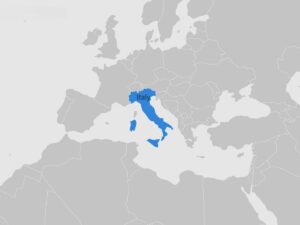
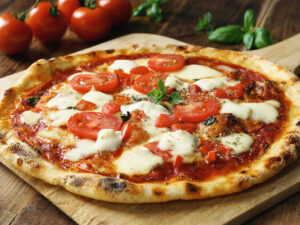
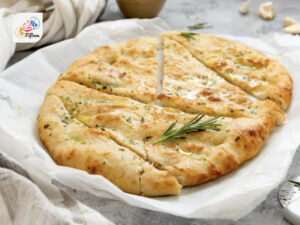
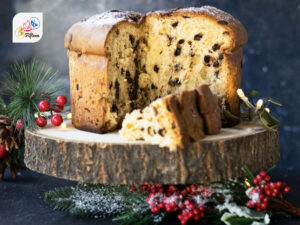
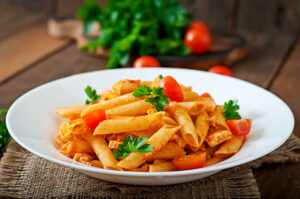
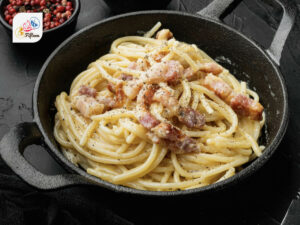
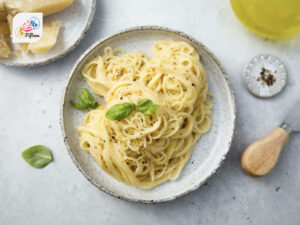
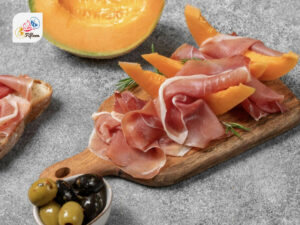
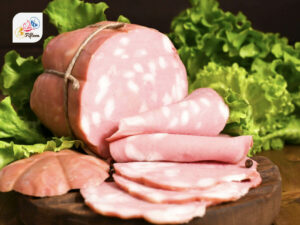
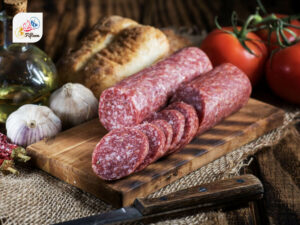

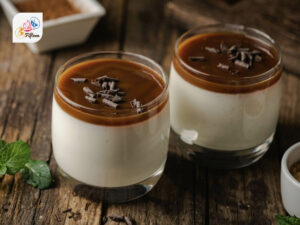


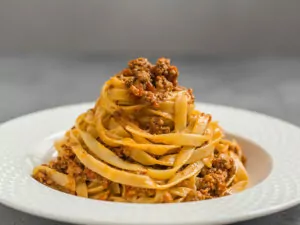


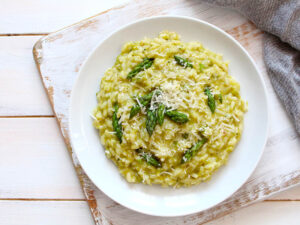
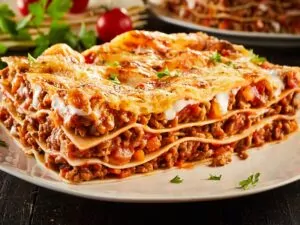
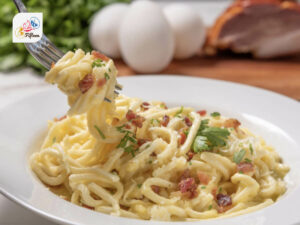
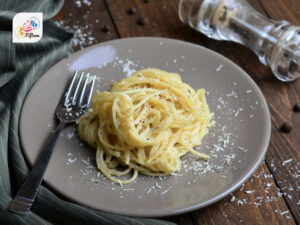
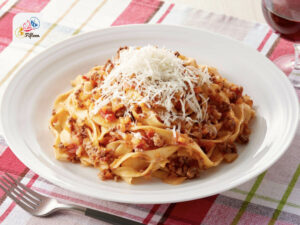
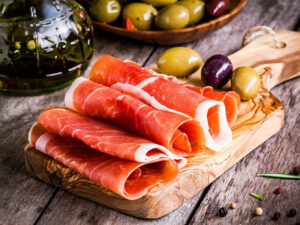
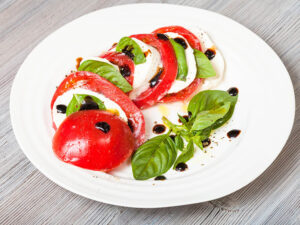
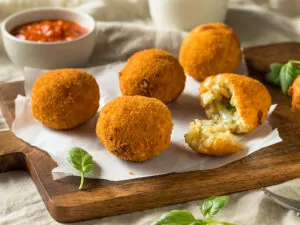


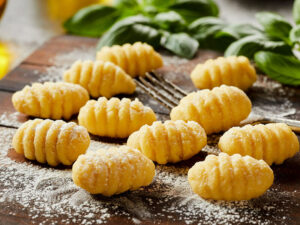
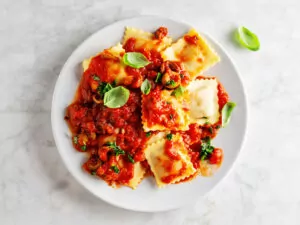
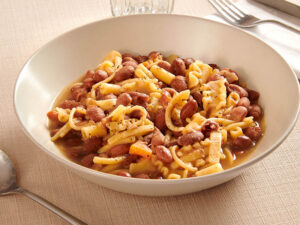
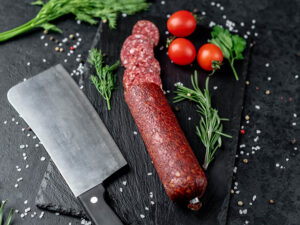
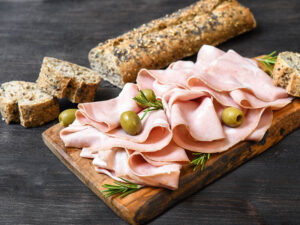
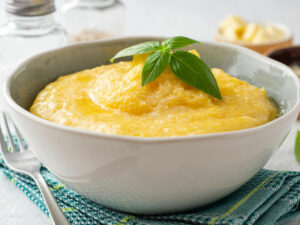
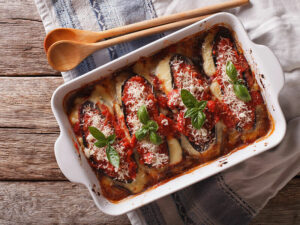
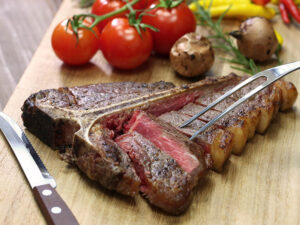
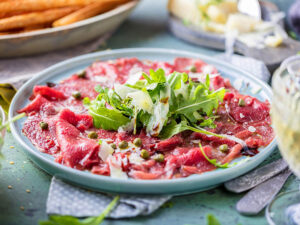
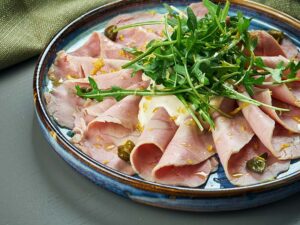
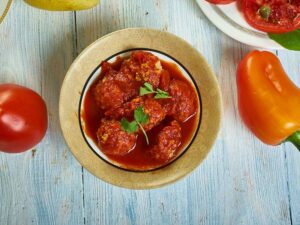
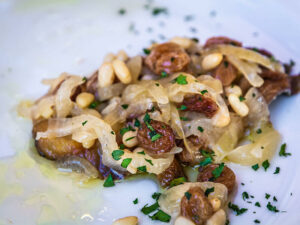
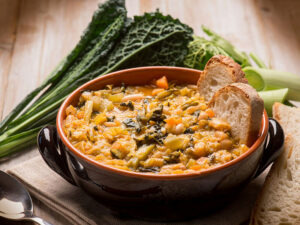
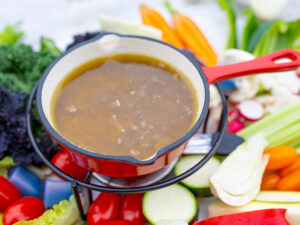

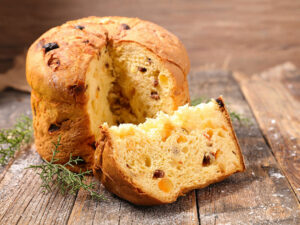
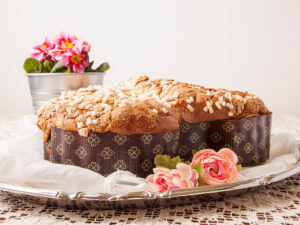

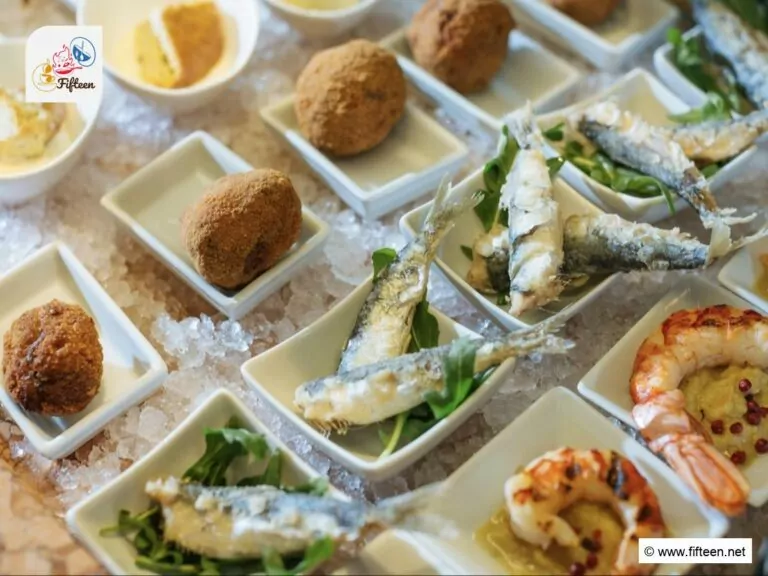
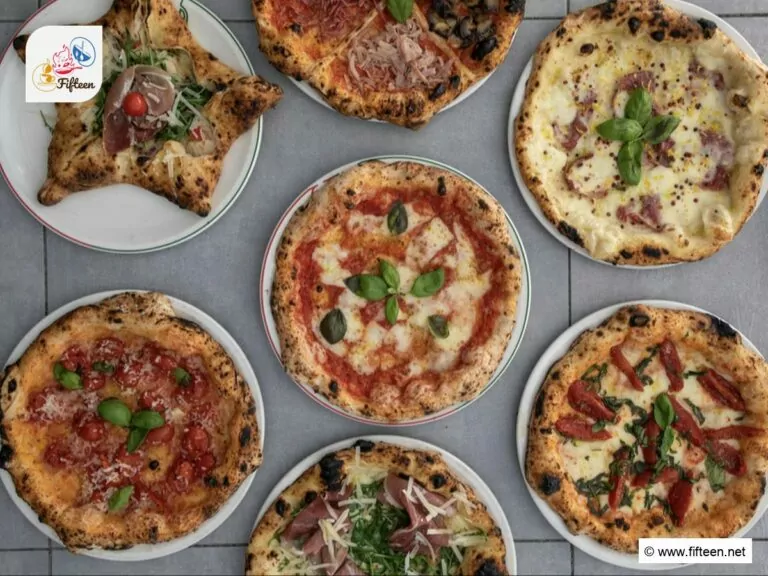
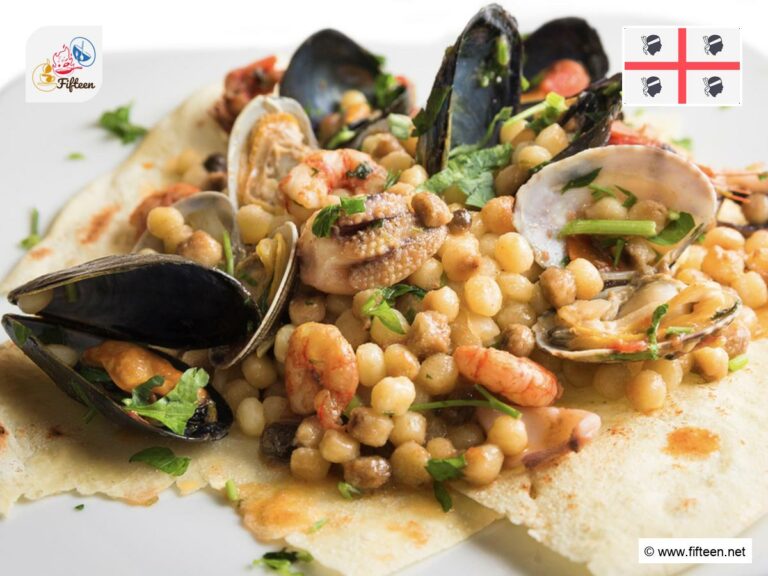
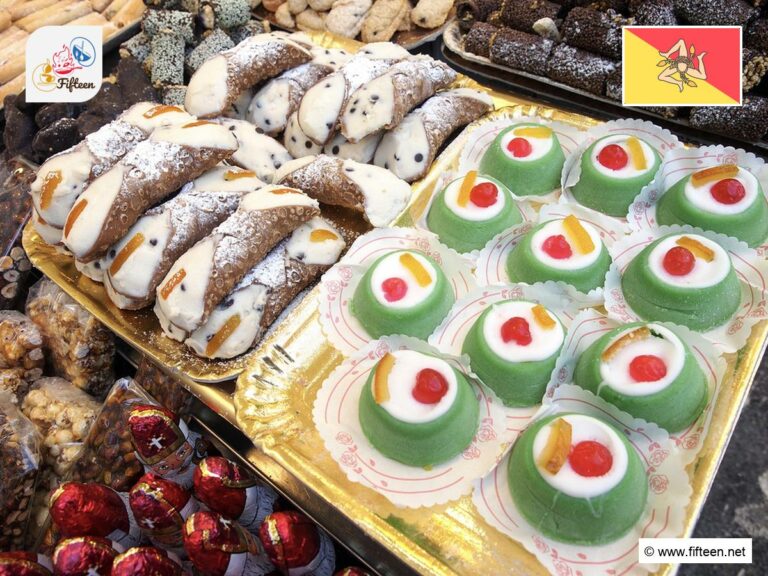
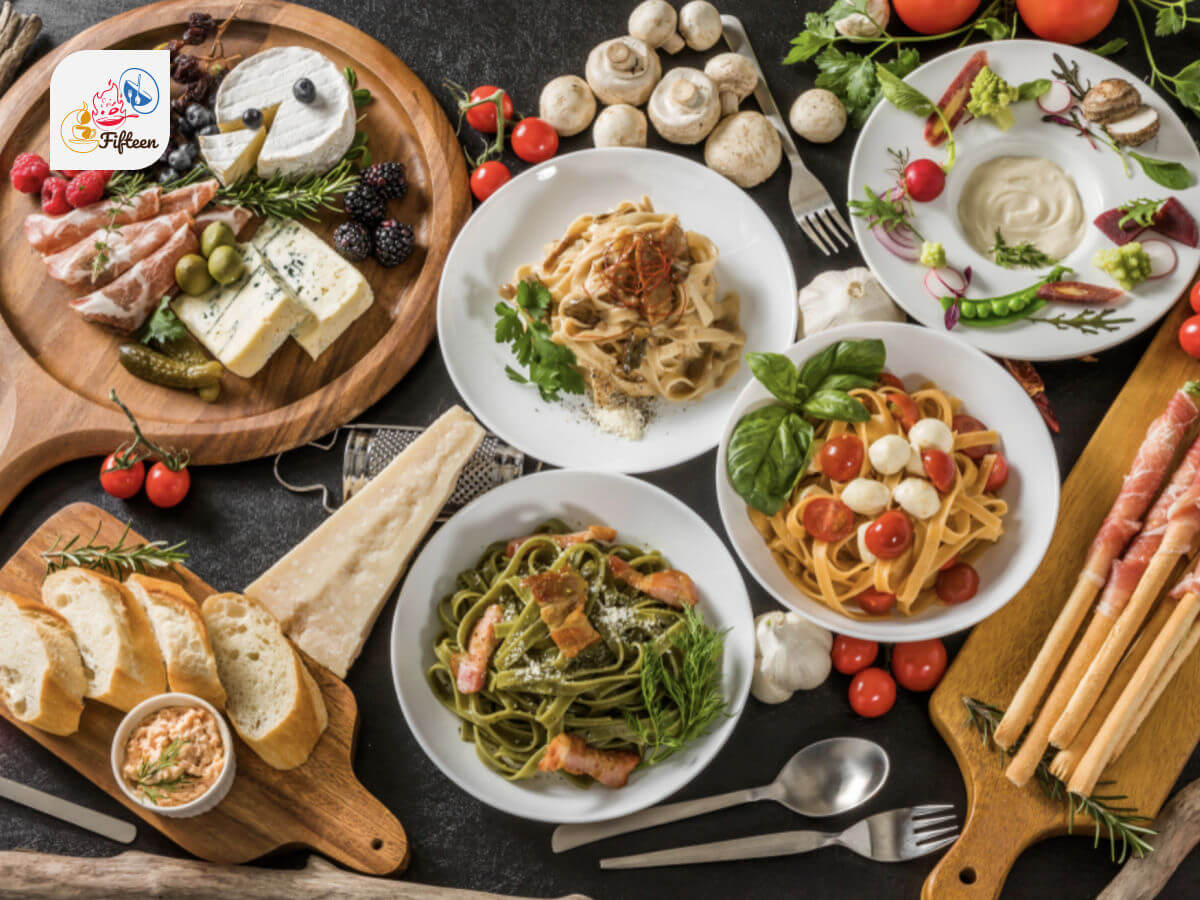

Jamie Scott
Editor in Chief, Senior Content Writer
Expertise
Home Cooking, Meal Planning, Recipe Development, Baking and Pastry, Food Editor, Cooking-video Maker, Western Food Evaluation Expert
Education
Le Cordon Bleu College of Culinary Arts
Local Community College, New York, NY
Jamie Scott is a skilled culinary expert and content creator specializing in Western cuisine. With over 15 years in the culinary field and formal training from Le Cordon Bleu, Paris, Jamie deeply understands how to blend nutrition with delicious flavors. His passion for cooking matches his commitment to making healthy eating accessible and enjoyable.
On Fifteen.net, Jamie brings a fresh perspective to classic dishes and beverages, offering readers insightful recipes, cooking tips, and a fresh view on meal planning that emphasizes taste, health, and simplicity.